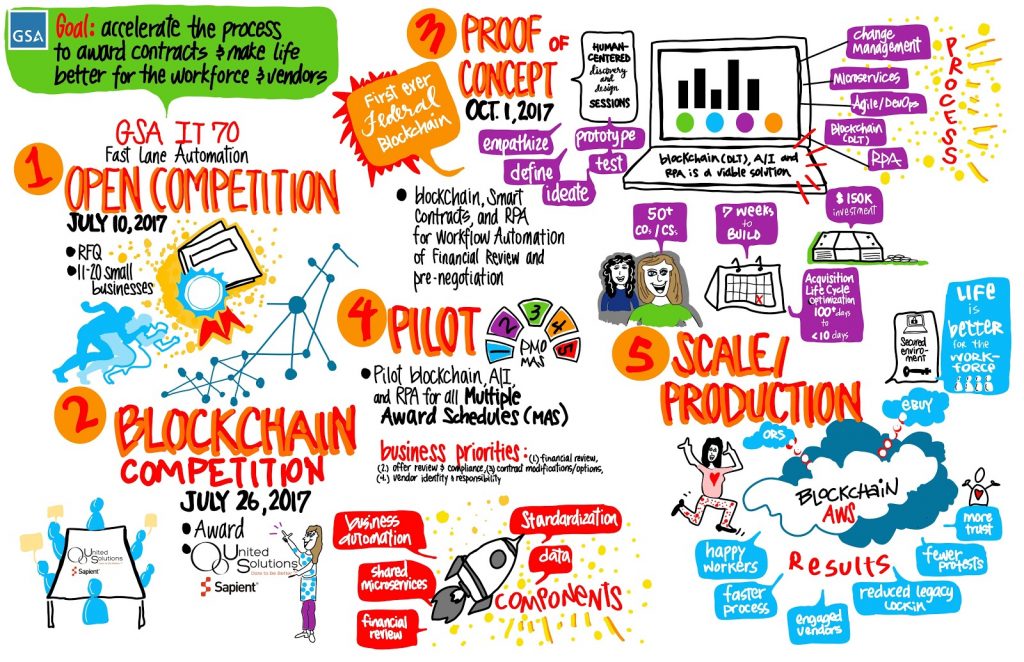Federal CIOs face the challenging task of funding IT modernization. In fact, over 78 percent of federal IT spending is dedicated to legacy systems (i.e., Operations and Maintenance (O&M)) and used for maintaining existing physical IT investments.
One untapped source of funds CIOs should evaluate for savings potential is software licensing.
As the largest buyer of commercial-off-the-shelf (COTS) software in the world, the federal government spends more than $9 billion annually through more than 50,000 transactions. However, as much as 30 percent of that spend is unnecessary. It occurs simply because of inefficient, decentralized software license management (SLM) and leads to uncoordinated buying practices.
In addition to needing to modernize, federal CIOs are juggling equally important priorities like identifying and securing against cybersecurity threats, increasing in both their number and sophistication.
Federal networks are an attractive target for cyber criminals able to expose vulnerabilities from unauthorized and unmanaged software.
It’s more important than ever for CIOs to:
- Understand their software license inventories
- Optimize software license deployments by identifying and eliminating licenses that are unused or underused
- Defend against software license compliance audits
- Identify vulnerabilities caused by non-managed, unauthorized, and unlicensed software
In addition to focusing attention on SLM and cybersecurity, federal CIOs have unique compliance mandates that differ from the commercial sector:
- Office of Management and Budget (OMB) M-16-12,
- the Federal Information Technology Acquisition Reform Act (FITARA),
- the Continuous Diagnostics and Mitigation (CDM) Program,
- Making Electronic Government Accountable By Yielding Tangible Efficiencies Act of 2016 (MEGABYTE),
- Technology Business Management (TBM) and
- OMB’s Cloud Smart Strategy.
Specifically, agencies are now required to:
- Establish and automate management controls for IT investments
- Provide transparency on IT resources across agencies
- Develop a comprehensive software licensing policy
- Track spend, inventories, and cost savings on software
- Identify unused licenses and avoid duplication
GSA Can Help
In April 2016, GSA developed a comprehensive Software License Management Service (SLMS) offering for federal agencies. SLMS is built upon the efficient and effective use of current and emerging Information Technology Asset Management (ITAM) models, and aims to help federal agencies adopt robust IT asset management programs.
Typically with government customers, SLMS begins by assessing the current state of agency Software License Management (SLM) programs.
SLMS delivers a roadmap for achieving a desired future state based on assessment findings, industry best practices, and agency objectives.
SLM Fast is designed to provide low-impact and quick-start SLMS, giving agency CIOs, CFOs, and acquisition and procurement offices rapid access to the guidance needed to
- better control software asset inventories,
- improve compliance with mandates,
- defend against software audits, and
- optimize unused software, or eliminate applications from networks that have exceeded their end-of-life support date.
Key features of the GSA’s new SLM Fast service include:
- SLM Fast engagements are no cost to the agency
- Simple to execute via an Memorandum of Understanding (engagement letter) (MOU) and pre-engagement package with prerequisites
- 8-week (40 business-day) engagement with key agency checkpoints and milestones
- The 5 “Cs” of SLM Fast: Cloud, Cybersecurity, Compliance, Cost Savings and Complete OMB Analysis of Alternatives (AoAs) for selected Original Equipment Manufacturers (OEMs)
SLM Fast does this using a data-focused approach, providing agencies with the following:
- Inventory Analysis: Combines discovery, contract, and entitlement data to develop license position(s) based on live inventory data
- Business Case: Demonstrates real savings and ROI that is rapidly attainable through enabling and/or reducing shelfware
- Custom Dashboard: Provides stakeholders relevant business intelligence dashboards to helping strategic investment planning and cost-reduction efforts (e.g., migration to cloud, data center consolidation)
- Implementation Roadmap: Establishes a detailed plan for successfully implementing a self-sustaining IT asset management program management office at each customer agency
- SLM Maturation: Establishes a centrally hosted license repository to provide cross-agency knowledge transfer and make it easier to coordinate buying based on common requirements.
The SLM Fast service capitalizes on the federal government’s immense purchasing power and GSA’s unique position to coordinate software license procurement and management efforts across agencies.
Ultimately, the work we do at GSA is about service. Our team must understand both our customers’ needs and the challenges they face meeting them.
To that end, we are taking the next step to answer our customers’ challenges by introducing the new SLM Fast service. It’s fast (requiring minimal federal agency resources), it’s effective, and it’s no cost to qualifying agencies.
If you’re interested in learning more, or scheduling an individual briefing from our team, visit our SLMS page or email us at slms@gsa.gov.

